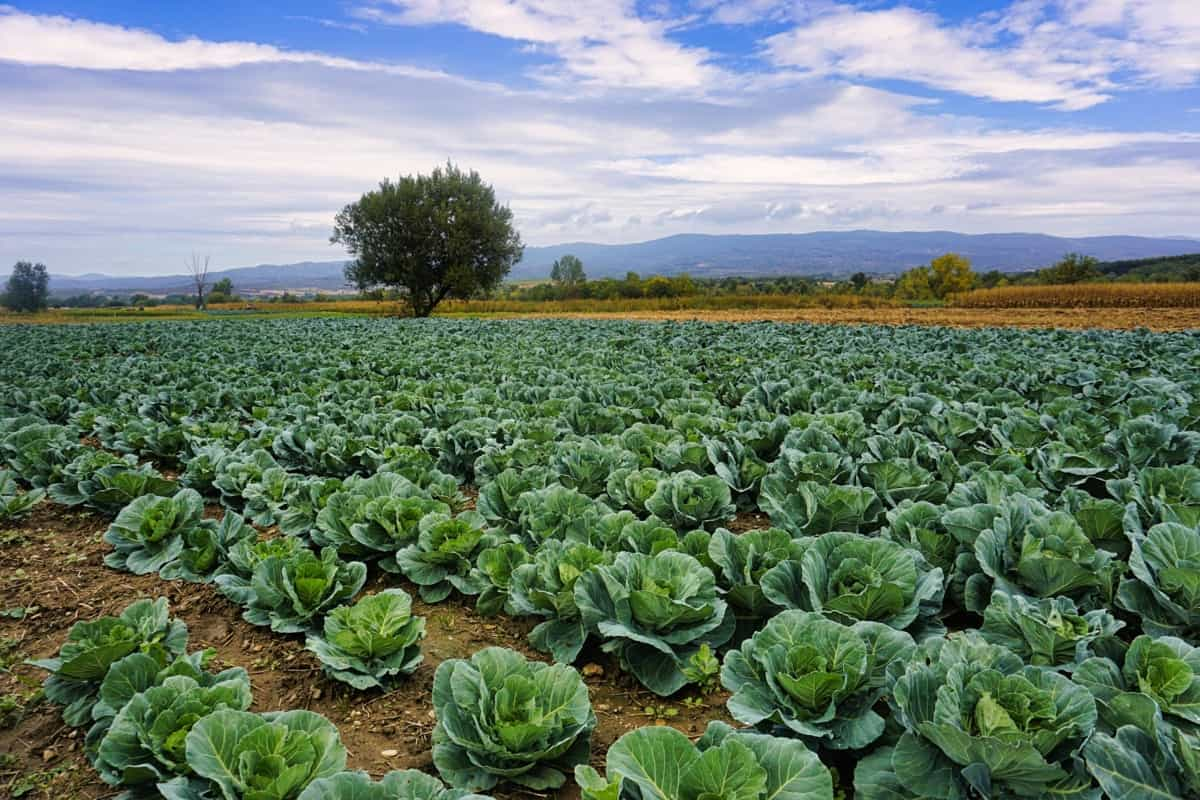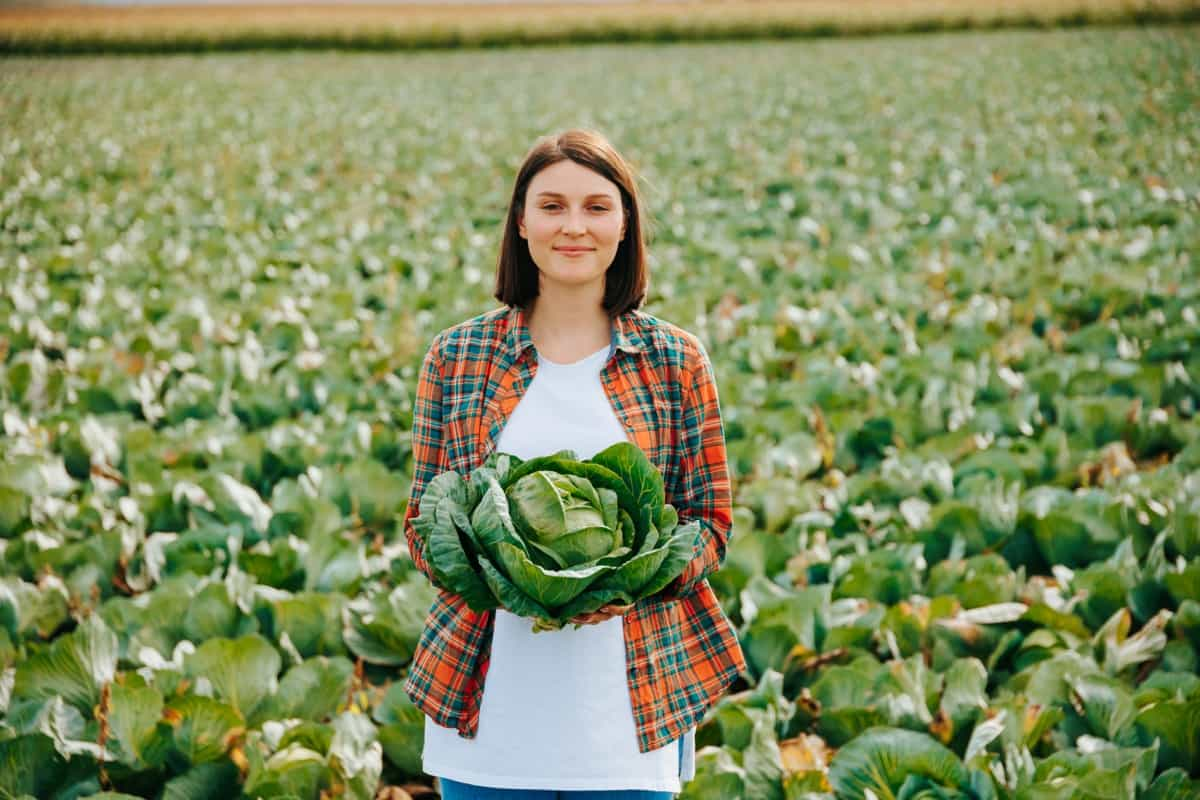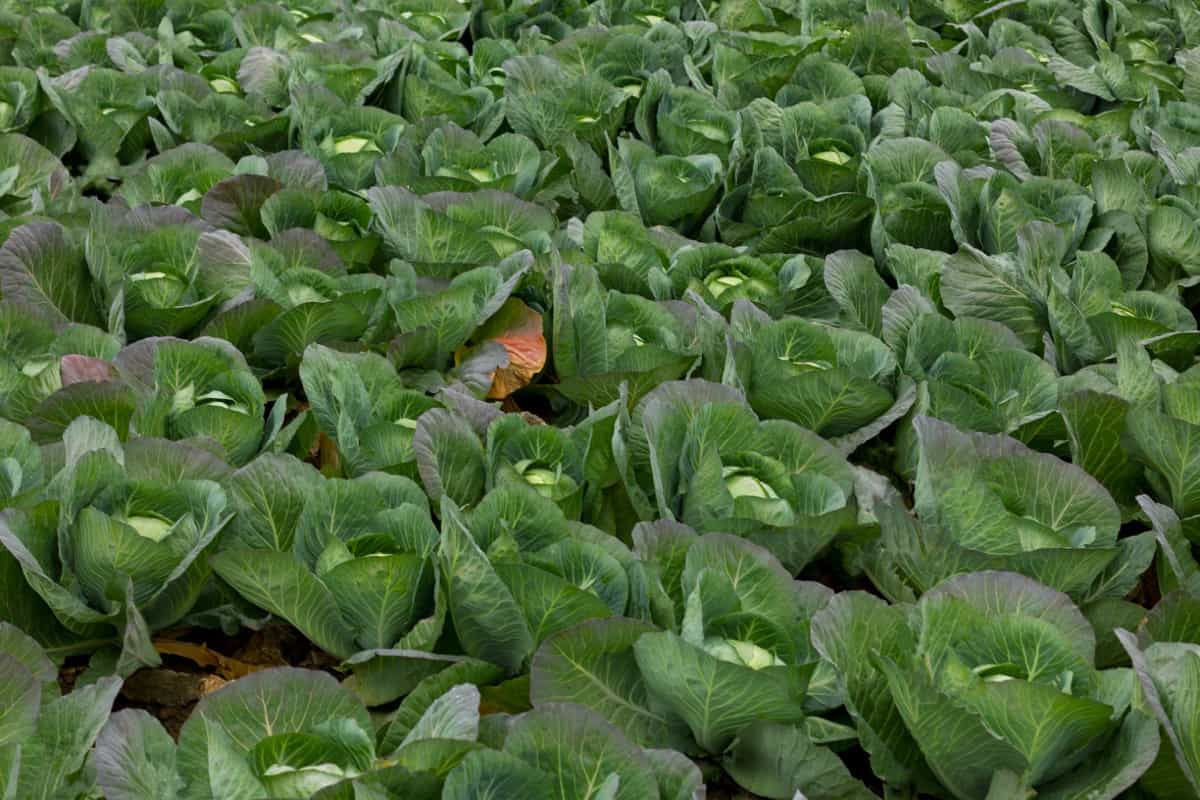Transferring pollen from one cabbage flower to another is critical to successful cabbage cultivation. It’s the point where the phrase “How is cabbage pollinated” becomes crucial to understand for gardeners and cultivators alike. Different methods exist to achieve this task, from natural to hand pollination. Each method has its intricacies and challenges, but these techniques lead to a fruitful harvest when done correctly.

How to Pollinate Cabbage Flowers
Hand Pollination of Cabbage Flowers
The Hand Pollination of Cabbage Flowers technique is commonly adopted when natural pollinators are absent, or the environmental conditions are not conducive to natural pollination. In this process, pollen grains are manually transferred from the male flower to the female part.
This labor-intensive method necessitates understanding the anatomy of the cabbage flower and its timing. The steps involved include identifying the male and female parts of the flower, using a small brush or cotton swab to collect pollen from the male part, and then gently transferring it to the female part. While this technique can be laborious, it is also often reliable, especially in controlled environments.
Methods for Natural Pollination of Cabbage Flowers
Understanding the Methods for Natural Pollination of Cabbage Flowers can provide insights into ways to create conditions suitable for natural pollination. Cabbages are mostly self-pollinating plants. This means the male and female reproductive organs are contained within the same flower, reducing reliance on external pollinators.
However, certain conditions like wind and insects can facilitate pollination. Planting different varieties of plants in your garden, which can attract pollinators, and having other cabbage plants for cross-pollination, can aid in natural pollination. Providing habitat for beneficial insects can also contribute to the natural pollination of cabbage flowers.
Tips for Pollinating Cabbage Flowers
Considering the best Tips for Pollinating Cabbage Flowers is essential for effective results. One major tip includes knowing the right timing. Pollination should be done when the flowers are in their blooming stage. The early morning is often the best time for this, as the flowers are typically open and receptive.
Another tip is to have patience. Sometimes the results are not immediately visible, but patience ensures the process can take its natural course. Maintaining healthy plants by watering and fertilizing them regularly is also beneficial, as healthier plants are more likely to produce successful pollination results.
Cabbage Flower Pollination Techniques
There are various Cabbage Flower Pollination Techniques that gardeners can adopt. In addition to hand pollination, other techniques involve pollinator-friendly environments. Creating biodiversity in your garden by planting different flowering plants can attract more pollinators, thereby enhancing pollination.
Another technique is to promote wind pollination by positioning your cabbage plants in the path of natural winds. Additionally, implementing companion planting techniques, where cabbage is grown alongside other plants that deter pests or attract beneficial insects, can also prove beneficial.
In case you missed it: 10 Common Problems With Garden-Grown Cabbage Plants: Treatment and Solutions

Pollinating Cabbage Plants by Hand
The process of Pollinating Cabbage Plants by Hand involves various steps. Initially, you need to identify the male and female parts of the cabbage flowers. Then, using a small brush or a cotton swab, collect pollen from the male part and gently transfer it to the female part. The brush or swab should be clean and dry to prevent any contamination. Remember to be gentle during the process to avoid damaging the delicate flowers. Repeating this process for a few days is also recommended to increase the chances of successful pollination.
Promoting Natural Pollination in Cabbage Flowers
Promoting Natural Pollination in Cabbage Flowers can be achieved by encouraging pollinators. This can be done by planting different varieties of plants to attract a diverse range of pollinators. Also, maintaining a clean and safe garden environment that encourages the presence of these pollinators can contribute to natural pollination.
Additionally, allowing for a certain level of pest presence might seem counterintuitive, but some insects play a vital role in pollination. The balance between pest control and promoting beneficial insects is key to promoting natural pollination.
Factors Affecting Cabbage Flower Pollination
Various Factors Affecting Cabbage Flower Pollination should be considered for successful pollination. Weather conditions, including temperature and humidity, can greatly impact pollination. Strong winds can disperse the pollen, while rain can wash it away. Likewise, extremely hot or cold temperatures can affect the viability of the pollen.
Moreover, the health of the cabbage plant is another major factor. Healthy plants are more likely to successfully pollinate. Thus, regular watering, adequate sunlight, and proper nutrition are all factors that contribute to the health of the cabbage plant and, consequently, the success of pollination.
Enhancing Cabbage Flower Fertility Through Hand Pollination
Enhancing Cabbage Flower Fertility Through Hand Pollination requires careful execution. The method is labor-intensive, so the gardener must ensure the process is done meticulously and patiently. Repeated hand pollination over several days can increase the chances of success. Also, using a clean brush or cotton swab is essential to prevent contamination.
Care must be taken not to harm the flowers during the pollination process. A gentle touch is necessary when collecting and transferring the pollen. The goal is to mimic the natural process as closely as possible to maximize the chance of successful pollination.
Importance of Proper Pollination in Cabbage Cultivation
Finally, understanding the Importance of Proper Pollination in Cabbage Cultivation cannot be overstated. Proper pollination leads to successful fertilization, which in turn leads to the production of seeds. These seeds can be harvested and used for future planting. Moreover, a well-pollinated cabbage plant is more likely to produce a robust and sizeable cabbage head, yielding better.
Additionally, pollination encourages plant diversity. If cabbage flowers are allowed to cross-pollinate with different varieties, the resulting seeds can lead to new and potentially more resilient or productive varieties. Therefore, the proper pollination process forms the basis of a successful cabbage cultivation operation.
In case you missed it: How to Control Cabbage Worms and Caterpillars: Organic, Chemical, Biological, and Cultural Control Methods

Conclusion
The pollination of cabbage flowers, whether through natural methods or hand pollination, plays a pivotal role in successful cabbage cultivation. Each method offers unique advantages, from creating a pollinator-friendly garden to meticulously hand-pollinating each flower. These techniques, along with an understanding of the various factors affecting pollination, can dramatically improve the fertility and productivity of your cabbage plants.
The key to mastering these methods lies in patience, careful execution, and a commitment to understanding the nuances of the pollination process. Ultimately, effective pollination not only assures a plentiful harvest but also contributes to the biodiversity and ecological balance of your garden. It is the foundation upon which the successful cultivation and subsequent yield of cabbages rests. Therefore, for any gardener or cultivator, mastering these techniques and tips for pollinating cabbage flowers can unlock the potential for a bountiful and high-quality cabbage yield.
- Feed Your Flock for Less: Top 10 Tips to Save on Chicken Feed
- Ultimate Guide to Ossabaw Island Hog: Breeding, Raising, Diet, and Care
- Hatching Answers: The Top 10 Reasons Your Chickens Aren’t Laying Eggs
- Eggs and Economics: Breaking Down the Cost of Raising Backyard Chickens
- Defend Your Greens: Proven Methods to Keep Iguanas Out of Your Garden
- Ultimate Guide to Cinnamon Queen Chicken: A Comprehensive Guide for Beginners
- Ultimate Guide to California Tan Chicken: Breeding, Raising, Diet, Egg-Production and Care
- Ultimate Guide to Marsh Daisy Chicken: Breeding, Raising, Diet, and Care
- 10 Types of Chicken Farming Businesses You Can Start for Profits